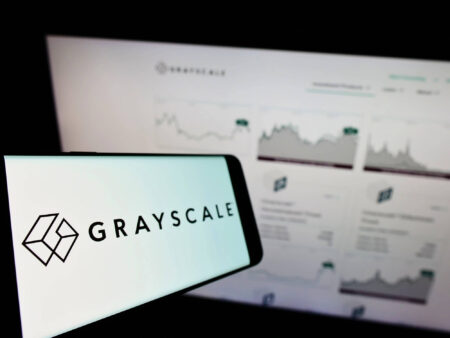Vitalik Buterin Backs ZKsync: Transforming Ethereum’s Core Value
- Vitalik Buterin endorsed ZKsync's Atlas upgrade, highlighting its underrated value in scaling Ethereum via ZK proofs. - The upgrade enables 15,000 TPS with near-zero fees and institutional adoption by Deutsche Bank and Citi for cross-chain settlements. - ZKsync's deflationary token model and $3.5B TVL reflect growing institutional confidence in ZK-based infrastructure. - Upcoming Fusaka upgrade aims to double throughput to 30,000 TPS, aligning with Ethereum's "Lean Ethereum" ZK-centric scaling strategy.
ZKsync's Atlas Upgrade: Driving Technical and Institutional Change
Launched at the end of 2025, ZKsync’s Atlas upgrade has established the platform as a key player in Ethereum’s Layer-2 scaling approach. The upgrade
This leap in technology has drawn considerable attention from institutions. For example, Deutsche Bank and Citi are reported to have implemented
Institutional Integration and Ethereum’s Evolving Strategy
Ethereum’s overarching plan, often referred to as "Lean
Significantly, collaborations with major organizations such as Sony and Deutsche Bank demonstrate ZKsync’s suitability for enterprise-level applications, including supply chain logistics and international payments
Looking Forward: Fusaka Upgrade and Market Forecasts
Looking to the future, ZKsync’s upcoming Fusaka upgrade,
For those investing, these advancements indicate that ZKsync is evolving beyond a typical Layer-2 solution, becoming a core element of Ethereum’s future. By minimizing dependence on the resource-intensive Layer 1 for high-volume activities, ZKsync boosts Ethereum’s effectiveness as a global settlement platform and attracts capital from traditional financial sectors.
Conclusion: Redefining Ethereum’s Value for a New Era
Vitalik Buterin’s support for ZKsync signals a growing agreement that ZK technology is central to Ethereum’s progress. As institutional adoption accelerates and ZK-driven solutions like Atlas and Fusaka advance, Ethereum’s value proposition is evolving from a decentralized ledger to a scalable, enterprise-ready system. For investors, this shift presents a compelling chance to benefit from the intersection of blockchain innovation and institutional-grade utility.
Disclaimer: The content of this article solely reflects the author's opinion and does not represent the platform in any capacity. This article is not intended to serve as a reference for making investment decisions.
You may also like
COAI's Abrupt Decline: What Causes a Significant Downturn in a Previously Popular Tech Index?
- COAI index plunged 88% in November 2025 due to regulatory ambiguity, earnings underperformance, and macroeconomic risks. - CLARITY Act left AI/crypto projects in legal gray areas, exacerbating volatility as investors fled speculative assets. - C3.ai's $116.8M loss, leadership turmoil, and 54% stock decline heavily dragged COAI's performance. - Global risk-off behavior and AI-driven trading amplified volatility amid Fed policy uncertainty and inflation concerns. - Market reassesses AI/crypto valuations as
Grayscale prepares to launch a Dogecoin ETF

Crypto Assets to Watch This November: Three Altcoins Ready for Lift-Off

Vitalik Buterin Critiques FTX, Emphasizes Ethereum’s Decentralized Nature
